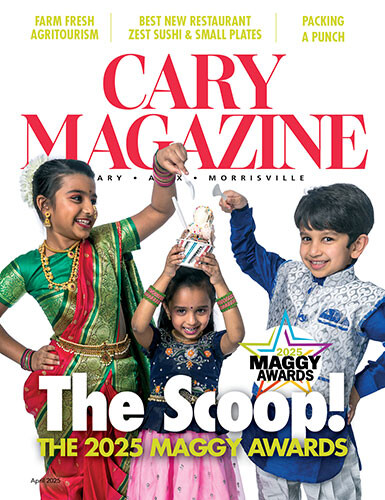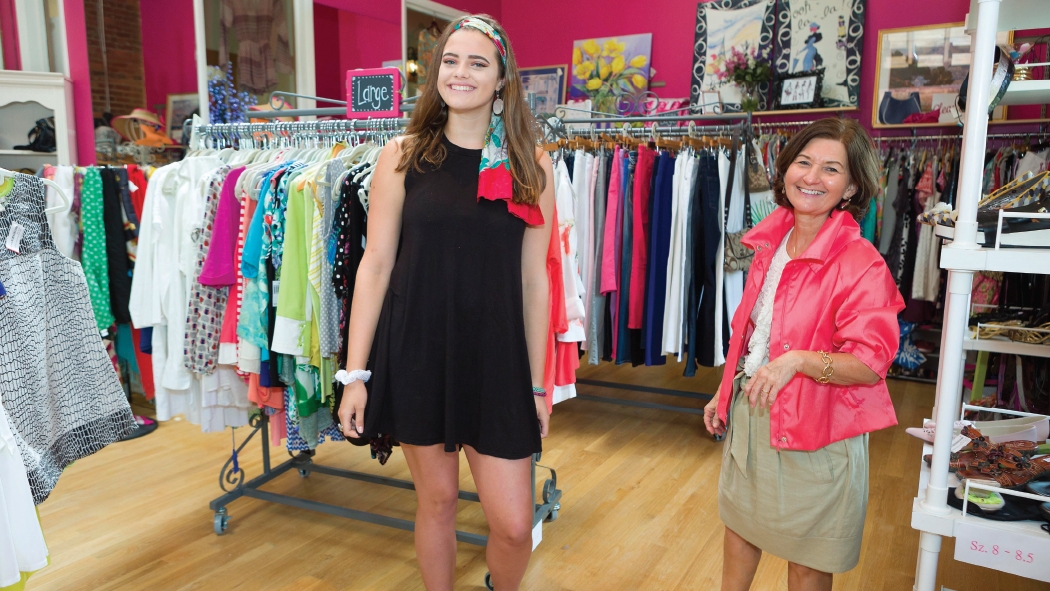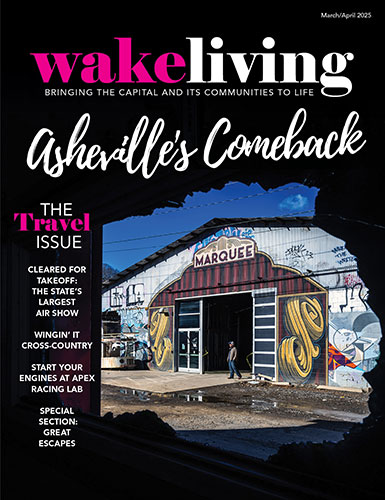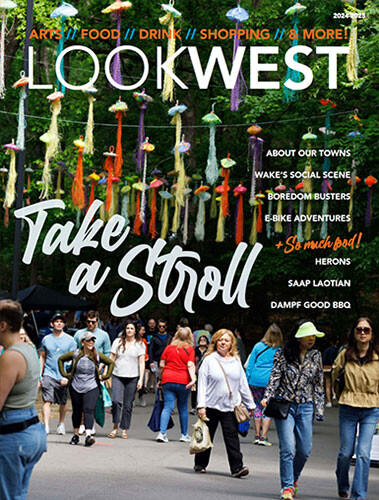Once we’ve learned even a little about fashion’s impact on our environment, a new question arises: What can we do about it?
Locals involved in the sustainable fashion movement say that by making a few changes to the way we shop, we can make a difference.
“My best advice is to not feel like you have to change your life or closet overnight,” said Beth Stewart, executive director of nonprofit Redress Raleigh, which works to educate people on the impact of their clothing purchases. “There are many small steps you can take to be more invested in sustainable fashion, and they all make a difference.”
Step one? Stop buying fast fashion, which adds to environmental waste both in its production and as part of a throw-away society.
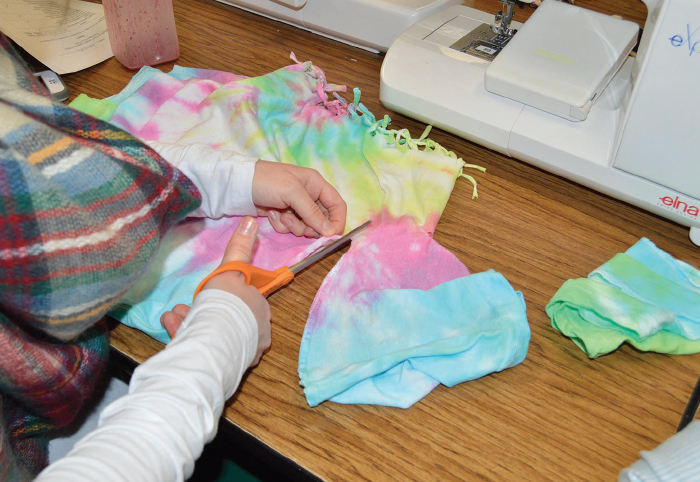
Dawn Harrison teaches Apparel & Textile Production and Fashion Merchandising at Apex Friendship High. A fashion industry veteran, she challenges students to design garments that address social, political and environmental issues.
Dawn Harrison teaches Apparel & Textile Production and Fashion Merchandising at Apex Friendship High School. She compares the process of revising your clothing purchases to the know-the-source, healthy food movement.
“Get rid of the idea that wearing ‘used’ clothes is a negative, and embrace it,” Harrison said. “Shop your own closet. Do clothing swaps, and make new clothes out of old — you can find YouTube videos to show you how. Think of your immediate needs versus the global picture.”
Along with sewing and design skills, students in Apex Friendship’s elective fashion program learn how and where their clothes are being made. Students blog on class website Fashion in the Peak, fashioninthepeak.weebly.com, and some made their own eco-friendly fabric dyes.
Local businesses partner in the teaching, such as Sophie & Mollies Boutique, and body-scanning software company [TC]2.
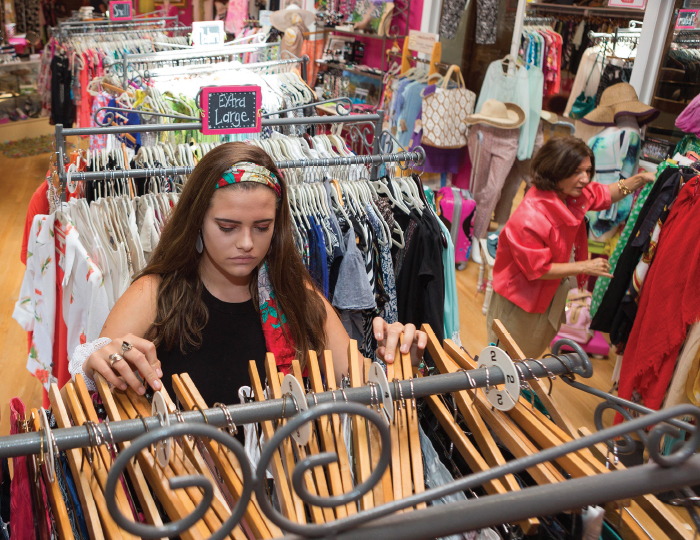
Compton and Cozart refresh the racks at My Girlfriend’s Closet. The resale shop buys good quality clothing outright, and holds popular clothing exchanges about every six weeks. “Resale reduces waste,” Cozart said. “We educate customers on how they can wear fewer pieces of better quality, and they see the difference.”
And Harrison challenges her students to design garments that address social, political and environmental issues, culminating in a school fashion show.
Junior Kally Compton works as an intern at My Girlfriend’s Closet, a resale boutique in Apex, to grow her fashion consciousness.
“I want to be creative, and to make a difference,” said Kally, an aspiring designer. “Clothing is a powerful industry, and a good way to express yourself and make change.
“You don’t have to know how to sew, or restructure pieces,” she said. “My Girlfriend’s Closet, and other stores like it, offer good quality clothes, some with the tags still on. Shopping thrift stores is a good idea too, for designer clothes that you can upcycle and change, like I make jeans into shorts.
“Try to buy Made in America,” Kally added. “That reduces child labor or worker issues, and the pollution from transporting clothes from other countries.”
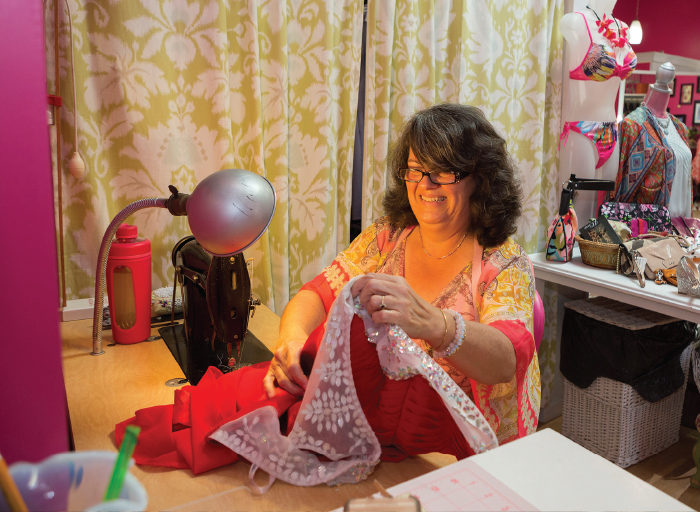
longtime seamstress Lia Sa of Fleur de Lia Alterations is on hand at My Girlfriend’s Closet to offer her expertise to customers. “I look at their body type and encourage them to try new looks,” she said. “You have to have that vision.”
“We have to get people to think this way,” said Harrison, who worked in the Los Angeles fashion scene before becoming a teacher. She chairs the Career & Technical Education department at Apex Friendship, and sits on the Teacher Advisory Group at the N.C. State College of Design. “This generation going into the fashion industry wants more transparency from employers and of the supply chain. We’re seeing and hearing a resurgence, a reinventing of textiles in the U.S., and it’s exciting to be a part of. Students see that potential.”
Mother-son designer duo Teresa and Giovanni Perna of MAYD in CHYNA see it too, and are putting their own stamp on the future of fashion. The emerging designers were part of Redress’ recent fashion show.
“My mother was a talented seamstress with an impeccable eye for quality and design,” Teresa said. “As I grew older I became a connoisseur of well-made, long-lasting and unique designs that transcend seasons and time. To this day, I only make purchases that speak to these criteria. I’ve added my own personal agenda, to only work with something that benefits rather than takes away from people and planet.”
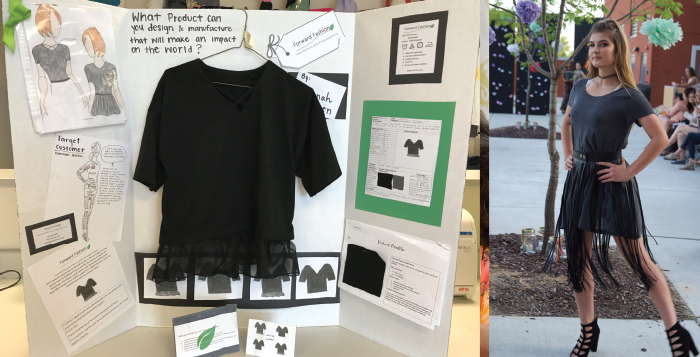
Fashion students at Apex Friendship High work with local businesses, blog, and take on design projects culminating in a student fashion show. Along the way, they learn ways to address fashion’s heavy impact on the environment.
Stewart, of Redress, notes that the textile industry is massive and complex, and change won’t come easily.
“Not being too hard on yourself to be ‘perfect’ helps, particularly since there is no perfect sustainable apparel right now,” she said. “Instead, focus on what we can do and give positive feedback to companies specifically trying to be more responsible, through your voice and your money.
“You often have to make trade-offs in this process of greening. But any step you take will contribute to the improvement of the fashion industry.”
- Stop buying fast fashion. This is the first, and potentially most impactful, thing you can do.
- Repair and repurpose. Go to the internet for DIY tips, or support small business by using a tailor and/or shoe repair shop.
- Support independent designers. They offer pieces that tell a story you can share.
- Read the tag before you buy. Take note of the type of fabric, and production location. Reach out to companies via social media to ask questions that hold them accountable.
- Re-wear items before washing. Think about how dirty something is before you wash it. Cold water is much better for the environment, and air drying uses less energy.
- Participate in a clothing swap. Exchange gently-used items with friends to reduce waste and save money.
- Buy pre-loved items. Items you find at consignment, resale or vintage stores are often of a higher quality than fast fashion. You’ll reduce waste, support a small business and find one-of-a-kind chic.
- Shop local, shop small. Local designers and boutiques support the community much more than large corporations.
- Develop a personal style. Cultivate a closet full of items you truly enjoy. It reduces waste and saves you money for higher-quality items.
- Learn more. Read about the companies you buy from, and get involved.
Source: Redress Raleigh, redressraleigh.org
2nd
The clothing industry is the second largest polluter in the world, behind oil
5,000
Gallons of water used in making a T-shirt and pair of jeans
1 percent
Organic cotton is about 1 percent of all cotton grown worldwide
Half-trillion
Gallons of fresh water needed to dye textiles each year
22 billion
Number of new clothing items bought by Americans each year; 2 percent are domestically
manufactured
Not biodegradable
Polyester and nylon
Source: EcoWatch, ecowatch.com
